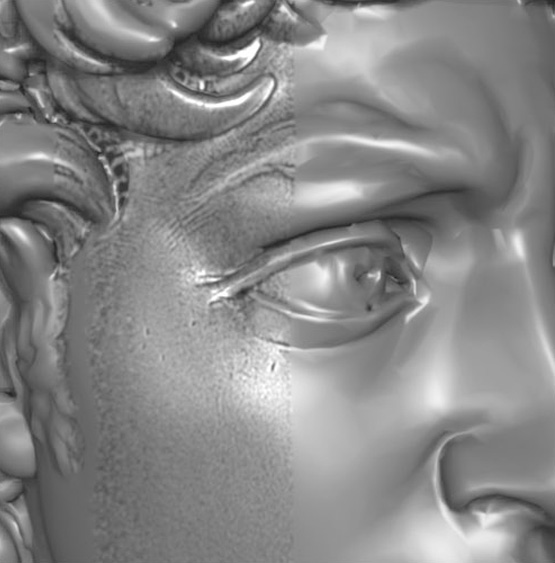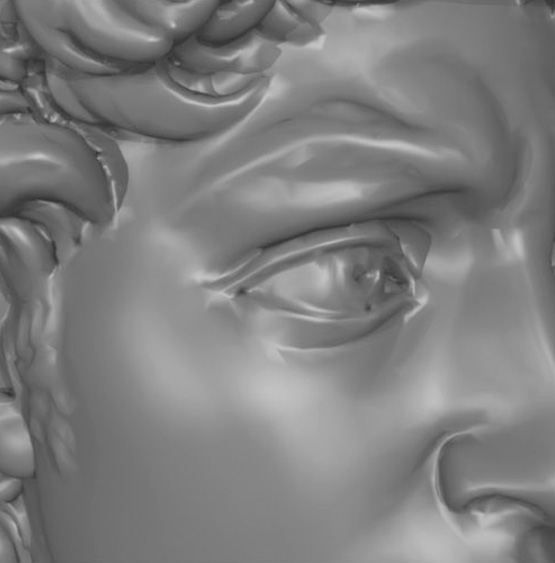“Projecting surface curvature maps” by Rugis
Conference:
Type(s):
Title:
- Projecting surface curvature maps
Presenter(s)/Author(s):
Abstract:
High resolution 3D range scan digitizations often produce data sets that, when directly converted to 3D models, are too large to be rendered quickly for display. The usual solution to this problem is to sacrifice detail and reduce the model size by simplification. In this research, we propose a method whereby high resolution detail can be merged with a simplified mesh model for visualization. To this end, we firstly introduce curvature maps which are calculated from the original scan data associated with each scan view point. Then we project these curvature maps onto a simplified model in a way that is analogous to using slide projectors to project multiple photographs onto a 3D object.
References:
1. Foley, J., Vandam, A., Feiner, S., and Hughes, J. 1996. Computer Graphics: Principles and Practice. Addison-Wesley, Boston.
2. Klette, R., and Rosenfeld, A. 2004. Digital Geometry. Morgan Kaufmann, San Francisco.
3. Levoy, M., Pulli, K., Curless, B., Rusinkiewicz, S., Koller, D., Pereira, L., Ginzton, M., Anderson, S., Davis, J., Ginsberg, J., Shade, J., and Fulk, D. 2000. The digital michelangelo project. In Proceedings of SIGGRAPH 2000, ACM Press / ACM SIGGRAPH, K. Akeley, Ed., 131–144.
4. Rugis, J. 2005. Surface curvature maps and Michelangelo’s David. In Image and Vision Computing New Zealand 2005, B. McCane, Ed., 218–222.
Additional Images:






